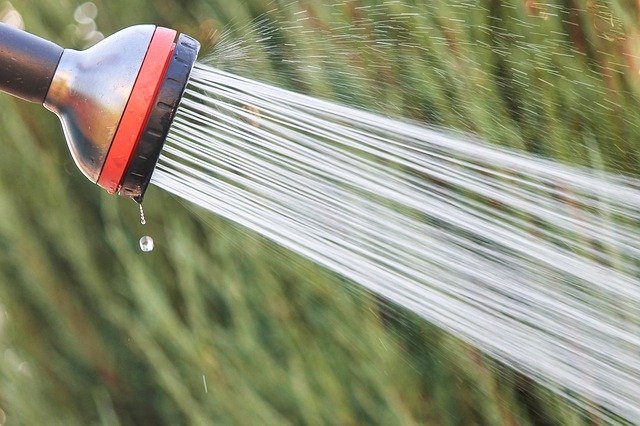Just like humans need supporting nutrients along with regular meals to remain healthy similarly, plants need fertilizer. The fertilizers fulfill the demands of micronutrients (minerals) like potassium, magnesium, phosphorus, and others.

If you want, your garden looks greener, and the plant maintains its beauty and gives a high yield of flowe
rs and fruit, then fertilizer application is mandatory.
Regular and improper spreading of fertilizer may also lead to the destruction of farms.
If you are thinking, what is the correct method of fertilizer spreading? And which season remains best for applying nutrients? Then keep reading this article. I will tell you every necessary step you should take to keep your plants healthy.
Importance of fertilizer spreading
For growing plants, the soil has to be fertile which means it should be rich in nutrients. Fertilizers add up the essential nutrients in the land plants use these minerals for their growth.
Here are a few importance of fertilizers of different compositions
Nitrogen fertilizer
Spreading fertilizer is necessary for promoting plant growth. The nitrogen-containing fertilizer not only boosts plant growth but also maintains the greenery of the plant.
Phosphorus fertilizer
Phosphorus-containing fertilizers help in plant maturation and promote seed development.
Potassium fertilizer
Potassium is an essential nutrient that plays a vital role in plant growth. Potassium fertilizers strengthen the immunity or resistance of plants and help plants to bear harsh weather.
Which is the best time of fertilizer spreading?
Apply the nutrient when there is a need for it. It is suggested that spring is the best season for fertilizing. In this season, plants need more nutrients to form flowers and leaves. Specifically, when the temperature of the soil reaches 55 degrees then starts spreading nutrients.
Along with fertilizing in the spring season, fall fertilizing is also necessary especially, for grasses, because roots develop at that duration.
Tips for fertilizer spreading
Choose right fertilizer
The essential thing you have to do before selecting fertilizer for your farm is soil analysis. In the soil test, you will get an idea of soil pH and mineral quantity in the soil. You can select the fertilizer accordingly after salt analysis.
Fertilizer comes in two different compositions, one is complete fertilizer that contains all essential nutrients in appropriate amounts, and the other is specialized fertilizer.
If the soil is not depleted in any specific mineral, then it is good to use a complete fertilizer that contains nitrogen, phosphorus, and potassium in specified amounts.
It is necessary to ensure that the fertilizer is uniformly compound, so every area receives an equal amount of minerals. If you have to fertilize a large area or you need to spray liquid fertilizer in a vast yard, use a large-capacity ATV tank sprayer to save time.
Which is best Liquid fertilizer or granular fertilizer?
Many times you have heard or read that granular fertilizer is more efficient than liquid. But both liquid, and dry fertilizer boost plant growth if you use it at the right time and in the required quantity.
Each form has its own pros and cons. You can select any of these that best suit your requirement.
Granular fertilizers are slow-release fertilizers, and there is no need to spread them over and over. After the first course of application, the granules slowly release nutrients that get absorbed in the plant. This type of fertilizer saves you time, energy, and money that can be invested if you choose liquid fertilizer.
It is kept in mind that plants use nutrients in liquid form only, so proper watering after fertilizer spreading is necessary. If the granules do not get enough water, they will remain unavailable for plants, and instead of promoting growth, they will create harmful effects.
Liquid fertilizers release the same amount of nutrients as dry granules, but the only difference lies in application time. The liquid form of fertilizer has to be sprayed more often because it releases quickly, so you have to put extra time, effort, and money.
Avoid over-application
Instead of promoting plant growth, the over-application of fertilizer creates harmful effects on plants. Follow the manufacturer’s instructions, and apply the same dose as instructed.
Sometimes hand spreading causes uneven distributions, few parts of the land get more, and others get nothing, so to avoid this scenario, you can use lawn care equipment like ATV spreaders or sprayers. This will give you a more obvious result than hand spreading.
The bottom line
Fertilizer plays a very crucial role in the development of healthy and strong plants. Fertilizers maintain the lawn greenery, enhance seeds and fruit growth and develop resistance in the plant.
It is necessary to apply fertilizers in required amounts because over-application leads to the death of plants. Along with quantity timing of nutrient spreading also matters a lot.
If you want to develop a beautiful lawn, then choose the right fertilizer after analyzing the soil. Its application by the correct methodology will give you the perfect result.
More Gardening Tips
The 4 Ways To Grow an Herb Garden